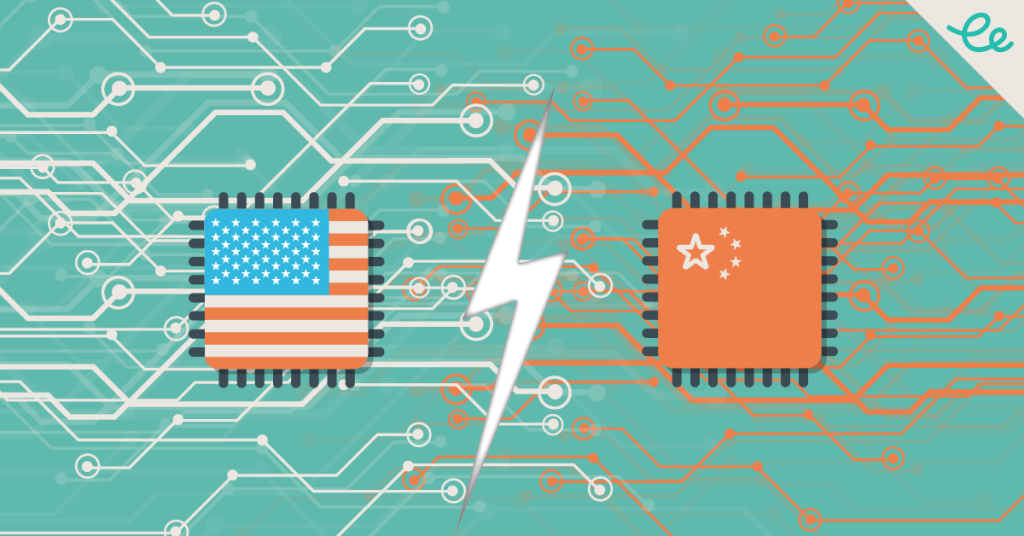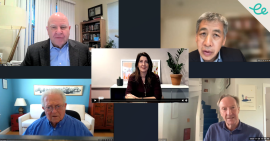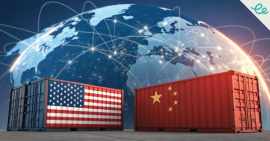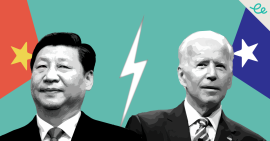China GDP slows in 2024 ahead of Presidential election
The chip war between China and the US is heating up after a key planning meeting reaffirmed Beijing’s priority to become a high-tech superpower. The White House is weighing tighter curbs on exports of advanced semiconductor technology to China. And the man trying to recover the US presidency has threatened to impose tariffs on all chips made outside the USA.
“When I came to office, the conventional wisdom was that China would inevitably surpass the United States,” said Joe Biden on July 24, in an address to the nation explaining his decision to withdraw from the election race. “That’s not the case anymore,” he claimed. Manufacturing has “come back to America”, while “we’re leading the world again in chips and science and innovation.”
Donald Trump will face Vice-President Kamala Harris in the November presidential poll. Whoever wins, the US is likely to resort to tariffs for a new round of trade war with China. The Biden White House has justified efforts to hobble Beijing’s progress in the chip sector with fears that cutting-edge technologies strengthen China’s military. Some analysts argue that US strategy is flawed because the controls are expediting China’s indigenous development of its own semiconductor supply chain.
If you want to learn more about Enodo’s analysis of this topic, and better understand the potential impact on your world, register for a FREE trial access to our comprehensive research service by clicking the button below.
Xi Jinping isn’t waiting for November’s result. At the Third Plenum (July 15-18), he vowed to make “high-quality development” the guiding force of the economy. Xi expounded on his vision of heavy investment in advanced manufacturing, dubbed “new quality productive forces” in Party speak, including the semiconductor industry.
Worth the wait?
China and the world had to wait longer than usual for the Communist Party elite to gather behind the firmly closed doors of their favourite military conference hotel in west Beijing. Months later than expected, the Third Plenum was attended by Xi Jinping and 363 other members and alternate members of the Party’s Central Committee. The third of the seven Party gatherings held over each Central Committee’s five-year cycle has become the most important, as a platform to launch potentially far-reaching reforms in the world’s second largest economy.
On July 21, state news agency Xinhua got the nod to release the full text of the conclave’s decisions. In more than 22,000 characters, the document lists a wide range of measures for the next five years. Despite its length, anyone looking for quick fixes to stimulate domestic demand left disappointed. China’s growth unexpectedly slowed in Q2 to the worst pace in five quarters, as faltering consumer spending undermined an export boom, but plenary policymakers resisted pressure to step up support.
Instead, they stuck to Xi’s script to support Beijing’s central ambitions of technological innovation and supply-chain self-sufficiency to achieve modernisation and counter US-led containment efforts. Among more than 300 proposed reforms, the ailing property sector warranted only four mentions, but terms related to technology, talent, science and innovation appeared 160 times.
“We will move faster to build industrial and supply chains that are self-supporting and risk-controllable”, the document promises, to bolster “key industrial chains” such as integrated circuits, industrial machine tools, medical equipment, instruments, basic software, industrial software and advanced materials. In addition, “we will develop China’s strategic hinterland and ensure backup plans for key industries.”
Wanted: Quality workforce, more innovation
China’s innovation capacity “falls short of the requirements for high-quality development,” Xi wrote to plenum attendees in an explanation of the resolution. “The industrial system, while large in size and extensive in scope, is not yet strong or sophisticated enough; the over-reliance on key and core technologies controlled by others has not been fundamentally changed.”
China’s capacity for innovation is not, by and large, cutting edge but in most respects “it appears sufficient to drive economic vitality”, concluded the authors of a 2023 study into China’s political economy of science, technology, and innovation. Another contrast with most developed economies is that China’s government assumes more of the burden of applied research, owing in part to the large state-owned sector.
Xi acknowledged the role of the private sector in driving innovation but there’s little prospect of the state giving way. The plenum’s Communique announced a 2029 deadline for China to develop a “quality workforce” to help power a country and economy driven by innovation. China is targeting science education and expertise, embarking on a five-year skills upgrade drive as it seeks to develop critical technology.
China could use “green cards” and permanent residency to lure more foreign scientists. The resolution document said the Party hopes to “improve the support mechanisms for recruiting talent from overseas and create internationally competitive personnel systems” and explore “avenues for establishing an immigration system for highly skilled personnel.”
The number of ethnic Chinese scientists who choose to leave America to return to China was accelerated in recent years by a US government probe which attempted to combat economic espionage but ended up prosecuting academics, according to a Stanford University study.
Top minds, tiny chips
Tech giant Huawei, which justlaunched its latest Top Minds program to recruit talented young individuals worldwide, is close to finishing a chip research and development centre in Shanghai designed to advance China’s technological ambitions despite US sanctions. The park in Qingpu district will be Huawei’s largest research centre, housing about 30,000 personnel, its own road network and railway system.
A top Chinese semiconductor industry executive has predicted that China will see “explosive growth” in the next three to five years, thanks to advantages in applications and packaging technologies, drawing a path for the country to overcome US technology restrictions. Chen Nanxiang, head of Yangtze Memory Technologies Corporation, said China is exploring a new market-driven model for the industry, while ditching the old model of relying on universities and research academies.
Chen suggested that a slowing of “Moore’s Law” – whereby the number of transistors in an integrated circuit doubles about every two years – is beneficial for China because it helps fuel innovation in other technologies such as advanced packaging. The drumbeat of progress includes findings published in Science on July 5 that showed Chinese scientists have produced an ultra-thin semiconductor material that could lead to the creation of faster and more energy-efficient microchips.
The empire strikes back
The apparent failure of existing US measures to prevent China from making advanced chips is sparking further curbs. Bloomberg reported that the White House has told allies it’s considering using the most severe trade restrictions available if companies such as ASML and Tokyo Electron continue giving Beijing access to advanced semiconductor technology.
But these export controls may inadvertently accelerate the development of China’s domestic semiconductor industry, three analysts argued in Foreign Affairs. “By limiting China’s access to foreign-made chips and manufacturing tools, the controls are creating new demand for indigenous Chinese equipment, fabrication capacity, and AI chips.”
Lei Jun, founder of Chinese smartphone maker Xiaomi, revealed this month that his fear of US sanctions in 2021 pushed him to build an electric vehicle business from scratch. Xiaomi’s cars are equipped with chips from Qualcomm and Nvidia, as well as its own S1, a mobile system-on-a-chip, and C1 image sensor, both designed in-house.
As we at Enodo expected, the Third Plenum offered only retrenchment. The slow program of institutional reform in support of technology innovation that has become Xi’s calling card will continue for the next five years. The expansion of industrial policy support for manufacturing sectors across the spectrum looks set to generate more trade conflict with both the US and EU.
If you want to learn more about Enodo’s analysis of this topic, and better understand the potential impact on your world, register for a FREE trial access to our comprehensive research service by clicking the button below.









Comments are closed.